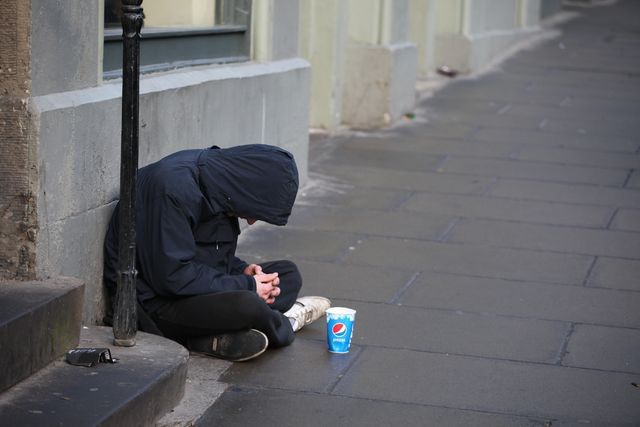Click here to subscribe today or Login.
Consider Nick and Terri, a homeless couple profiled in the Times Leader one bitter December day in 2004. Their story is old and complicated, but it’s as timeless as the human conditions spotlighted throughout this week, National Hunger and Homelessness Awareness Week.
Nick and Terri set up camp near the railroad tracks behind what was then the Murray complex, a thicket of brick buildings in Wilkes-Barre since razed to rubble.
They huddled against single-digit temperatures, under piles of clothes and blankets, in a tent of plastic propped up with branches.
They got showers, food and garb from charities. They warmed frozen edibles with body heat, and confessed that penchants for beer and unmarried cohabitation were reasons they weren’t in shelters – places that typically ban both booze and members of one gender.
The couple spun tales of how they arrived where they were, conveniently omitting unsavory elements of checkered pasts.
Homelessness and hunger have many faces. These two individuals reflected bits of what you often find: Bad luck. Bad choices. Bad associations. Bad health, coupled with bad (or no) insurance. Bad bets. Addiction. Stubborn rejection of available aid, or of common-sense rules. Sometimes denial, sometimes delusion.
Of course, that’s the adults. It is essential to remember that children are rarely homeless or hungry by choice. They might arrive at such a state huddled in the arms of a mother who fled an abusive spouse, or of parents devastated by mass layoffs, or by an economic downturn they had no hand in creating.
The paths to life-threatening need for food or shelter are as numerous as the people who find themselves at the food bank or on the streets. The roads back from that brink can be equally diverse.
Some might require only a few weeks of aid to get on firm footing, others might need to be connected with social services that can reweave a tattered life. The journey may require months of rehabilitation from substance abuse, or retraining for an available job.
The good news: This year’s annual snapshot of homelessness showed that, nationwide, the number of homeless was down about 3 percent. The number of homeless veterans dropped an impressive 17 percent.
The bad news: Almost 550,000 people are still without a home on any single night across the country. More troubling: The report by the federal Department of Housing and Urban Development found the number of homeless people physically living on the streets increased for the first time in recent years, by 2 percent.
Hunger and Homelessness Awareness Week is not a solution, it is merely a reminder. As we choose charities to support or politicians to endorse, as we argue policy and law, we need to keep this in mind.
These problems exist. These people struggle. They include children. Addiction is a disease. No one is immune to bad choice or bad fortune.
Homelessness and hunger are not stigmas on those who endure such plights; they are stigmas on a society that fails to – or worse, gives up on – finding solutions.





